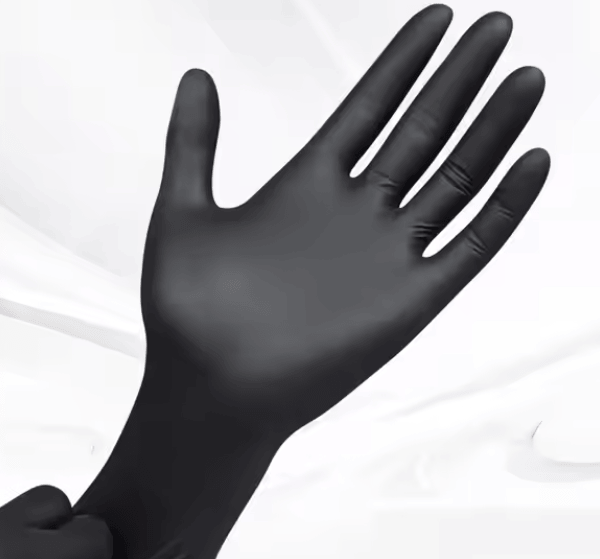Microflex Nitrile Gloves Finger Thickness – Precision Meets Protection
When it comes to disposable gloves that offer a balance of comfort, strength, and tactile precision, few brands are as trusted as Microflex. One of the key differentiators of Microflex nitrile gloves lies in their finger thickness—a specification that directly impacts puncture resistance, touch sensitivity, and durability.
Whether you’re in healthcare, automotive, laboratory, or industrial settings, understanding the finger thickness of Microflex nitrile gloves can help you choose the right glove for the task at hand.
What Is Finger Thickness in Nitrile Gloves?
Finger thickness refers to the measured thickness at the fingertips of a nitrile glove, usually expressed in mils (1 mil = 0.001 inches). This is crucial because:
•The fingertips are the most used and vulnerable parts of the glove.
•Greater thickness at the fingertips improves puncture resistance and chemical protection.
•Consistent or enhanced finger thickness ensures better tactile feedback and grip control, even in wet or oily environments.
Microflex Nitrile Gloves – Finger Thickness by Product
Microflex offers a variety of nitrile gloves tailored for different industries. Below are some popular models and their corresponding finger thickness:
Model Finger Thickness (mil) Key Features
Microflex Diamond Grip 9.6 mil Heavy-duty, textured grip, excellent for automotive & lab use
Microflex MidKnight 5.9 mil Black nitrile, strong grip, ideal for law enforcement
Microflex XCEED 3.5 mil Ultra-light, tactile sensitivity, great for healthcare
Microflex NeoPro EC 8.3 mil Extended cuff, chemical resistant, for critical environments
Microflex Supreno SE 6.7 mil Chemical-resistant, durable for industrial use
✅ Pro Tip: Finger thickness is typically greater than palm thickness, because the fingertips experience more friction and stress.
Why Finger Thickness Matters
Choosing the right Microflex nitrile gloves finger thickness is not just about durability—it’s about task matching:
Thin Fingers (3–4 mil):
•Maximum tactile sensitivity
•Ideal for healthcare, dental, and lab work
•Easier to feel instruments and patient skin
Medium Thickness (5–6 mil):
•Balanced durability and flexibility
•Suitable for food handling, janitorial, maintenance tasks
•Good resistance with reasonable touch sensitivity
Heavy-Duty Thickness (7+ mil):
•Maximum protection against punctures and chemicals
•Ideal for automotive, chemical handling, industrial cleaning
•Often come with textured fingertips for superior grip
Applications of Microflex Nitrile Gloves by Finger Thickness
•Healthcare & Dental: Choose gloves like Microflex XCEED for high sensitivity procedures.
•Industrial Work: Opt for Diamond Grip or Supreno SE to handle tools, oils, and chemicals.
•Law Enforcement & Tattooing: Go with MidKnight for reliable grip and professional appearance.
•Laboratory & Chemical Handling: Select NeoPro EC for high resistance and extended coverage.
Benefits of Microflex Nitrile Gloves with Optimized Finger Thickness
•🛡️ Enhanced Protection: Thicker fingertips reduce the risk of tears and punctures.
•✋ Better Grip: Textured or thicker fingertips offer more control with tools or instruments.
•🧪 Improved Chemical Resistance: Thicker material in fingertips enhances barrier properties.
•🧤 Comfortable Fit: Despite their strength, Microflex gloves maintain a snug and ergonomic fit.
•❌ Latex-Free Safety: All Microflex nitrile gloves are 100% latex-free—ideal for allergy-sensitive users.
Conclusion: Choose the Right Microflex Nitrile Glove Based on Finger Thickness
When precision and protection matter, Microflex nitrile gloves deliver industry-leading performance. Whether you need ultra-thin fingertips for delicate medical procedures or thick, textured fingertips for heavy-duty applications, there’s a Microflex glove to fit your exact requirements.
Understanding the finger thickness of each Microflex glove model empowers you to make informed choices that improve safety, comfort, and productivity.
Explore our full line of Microflex nitrile gloves today — available in a variety of thicknesses, sizes, and colors. Protect your hands. Elevate your performance.
SEO Keywords Used: Microflex nitrile gloves finger thickness, nitrile gloves thickness chart, thick nitrile gloves, textured fingertip gloves, 9 mil nitrile gloves, thin nitrile gloves for healthcare, industrial nitrile gloves Microflex
Analysis of MicroFlex Nitrile Gloves Finger Thickness
1. Product Overview
MicroFlex Nitrile Gloves are high-quality nitrile gloves featuring reinforced finger thickness, designed for medical, laboratory, and industrial cleaning applications. They offer enhanced durability and protection.
2. Importance of Finger Thickness
Improved Durability: The fingertips are the most prone to wear and tear. Reinforced thickness reduces puncture risks and extends glove lifespan.
Enhanced Tactile Sensitivity: Nitrile material provides good dexterity, while optimized thickness balances protection and flexibility.
Chemical Resistance: Nitrile rubber offers strong resistance to oils, acids, and solvents, and thicker fingertips further reduce permeation risks.
3. Thickness Specifications
Standard Nitrile Glove Thickness: Typically ranges from 0.05mm to 0.15mm, while MicroFlex’s reinforced fingertips may measure 0.1mm to 0.2mm (exact data should be verified with official specs).
Thickness Distribution: The gloves may use a variable thickness design—thicker at the fingertips and slightly thinner on the palm for better flexibility.
4. Recommended Applications
Medical Field: Suitable for surgical exams, dental procedures, and other tasks requiring precision and high protection.
Laboratory Use: Resistant to chemicals and punctures, ideal for handling biological samples or corrosive agents.
Industrial/Cleaning: Reduces wear and tear during mechanical operations or cleaning tasks.
5. Advantages & Potential Drawbacks
✅ Advantages:
Superior fingertip protection, minimizing puncture risks.
Excellent chemical resistance (better than latex against oils and solvents).
Latex-free, reducing allergy risks.
⚠️ Potential Drawbacks:
6. Competitor Comparison
Compared to brands like Ansell Micro-Touch® or Halyard Health®, MicroFlex may have an edge in finger-thickness reinforcement, but actual performance should be verified through ASTM puncture/tear resistance tests.
7. Purchasing Recommendations
Choose reinforced fingertip models for high-risk environments (e.g., sharp instruments or chemicals).
Opt for standard thickness if maximum dexterity is needed (e.g., precision instrument handling).
8. Conclusion
The finger-thickness design of MicroFlex Nitrile Gloves enhances protection in critical areas, making them ideal for high-risk settings. However, selecting the right thickness depends on specific needs. Always check product specifications (e.g., ASTM certifications) to ensure suitability for your use case.
For detailed technical data (e.g., exact thickness measurements, test standards), refer to official documentation or third-party reviews.
📞 Contact Us Today
For bulk orders, quotes, or product guidance, get in touch with our expert team:
Email: sales2@esdbest.com
Phone: +86 137 1427 2599
